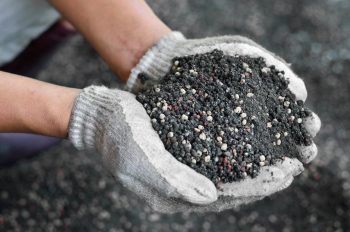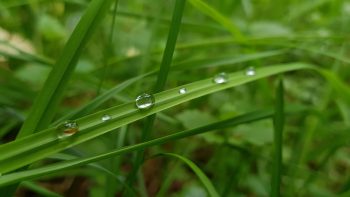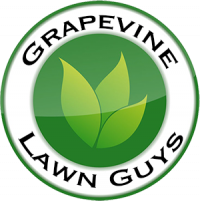 Nitrogen is the nutrient that powers your lawns growth. We give lawn support and care services ranging from grass cutting to fertilizing. If you are eager to begin re-energizing your lawn and seeing green in your yard and saving green in your pocket, contact our specialists at Grapevine Lawn Guys. Keeping your lawn or garden fresh, green and free of weeds is a job for specialists. Our team gives services meant to ensure your lawn remains looking awesome all year long.
Nitrogen is the nutrient that powers your lawns growth. We give lawn support and care services ranging from grass cutting to fertilizing. If you are eager to begin re-energizing your lawn and seeing green in your yard and saving green in your pocket, contact our specialists at Grapevine Lawn Guys. Keeping your lawn or garden fresh, green and free of weeds is a job for specialists. Our team gives services meant to ensure your lawn remains looking awesome all year long.
What is fertilization?
Fertilize your lawn appropriately, and you’ll be headed to a sound, thick remain of turf that keeps up a dark green shading and gives weeds a keep running for their cash. Nitrogen is each yard’s most essential nutrient, and each kind of grass require specific nutrients to show optimum development and growth execution. How regularly you maintain your lawns appearance, as well as support level will determine how often you need to fertilize. The more you fertilize, the more you’ll need to cut, for example if you have soils with an abundance of nitrogen, thus your yard will have a strong green appearance. The opposite is if you have very little nitrogen, then your grass will look not as vibrant and possibly patchy in color. Grapevine Lawn Guys will take the time to evaluate your lawn’s nutrient levels.
- Fertilizing can support sound lawn development. Doing as such at the correct time and in the best possible way can build the helpful results on the yard.
- Each kind of grass will call for specific fertilizing plans. Dependent upon the sort of grass this could either be in the middle of the warm season or cool season. Warm season grasses are served best when treated in pre-summer and late-spring. Cool season grasses are best served being treated once per year in the fall.
You will find 3-number ratios on most fertilizer bags in the market. These numbers represent the amount of nitrogen, phosphorus and potassium that the fertilizer contains. It is also known as N-P-K ratio. If for example you see the following N-P-K ratio on a fertilizer bag; 20-10-10, it means the fertilizer contains 20% nitrogen, 10% phosphorus and 10% potassium. The remaining percentage represents other materials and elements used to produce the fertilizer. A large percentage of nitrogen is important if your lawn is to grow properly. Potassium and phosphorus are also important but are generally required in lesser percentages.
When to fertilize lawn
Cool-season grass
Cool-season grasses mostly stays green all year when developed in cool areas. Such grasses do best in climates that have cooler winters and warm summers. These cool season grasses thrive best in areas with temperatures between 60 to 75 degrees Fahrenheit, which is usually mid spring to early fall.
Research suggests that fertilizing the cool season grasses twice in the fall, around September and November, and again in the spring, in May or April is best. Growth will resume after the principal cold weather no longer lingers for the rest of the season.
Warm-season grass
With temperatures 80 to 95 degrees Fahrenheit, warm-season grasses grow best. The warm season grasses go dormant in winter, dependent upon your climate and conditions. Winter dormancy keeps going three to five months.
Feed warm-season grasses in the middle of the seasons, however not in the middle of the extremely hot and humid summer months. Apply the fertilizer in three stages: first when the grass begins to green in late-winter, next in pre-summer, and as time goes on in pre-fall.
Watering a Lawn
 After fertilization Grapevine Lawn Guys recommend to water you yard thoroughly. To start it is very important to see how much water your lawn will require. It is important that the lawn gets around one inch of water for each week. If the nature gives the grass a quarter inch of rain, and there is no more rain in forecast for the week, then the yard will require another three quarters of an inch of water. Other factors to consider:
After fertilization Grapevine Lawn Guys recommend to water you yard thoroughly. To start it is very important to see how much water your lawn will require. It is important that the lawn gets around one inch of water for each week. If the nature gives the grass a quarter inch of rain, and there is no more rain in forecast for the week, then the yard will require another three quarters of an inch of water. Other factors to consider:
- It is also best to have a good understanding of your landscape. Landscapes that have more sand will require more water to become saturated. Soils that have loam or mixed grades of soil will require less water to stay saturated.
- It is best to water the lawn in the middle of the early morning hours. If all conceivable completely avoid watering in the middle of the day. This is the time of day that most wasting happens, reducing the effects the water will have on the lawn. Early morning watering limits the effects of wasting, and supports the lawn for the length of time of the day.
- It’s not good to over water the lawn since this can make the roots develop shallow, and as time goes on give power to the development of fungus. Soils, heavy with mud should be watered once every week. Since, sandy soils require more dampness, each third days should be enough.
To keep your lawn looking green, thick and healthy, proper fertilization is essential. Do it your selfer’s be sure to get a soil test done before starting your lawn fertilization. If you think this might be too difficult then call Grapevine Green Guys for your free estimate and take all the stress off your plate and onto ours! Lawn Care is our job and we love our work!
Related Services
Lawn Maintenance / Grass Installation / Shrubs & Tree Trimming / Landscape Install &Design / Flower Bed Install & Clean Up / Planting & Mulching
